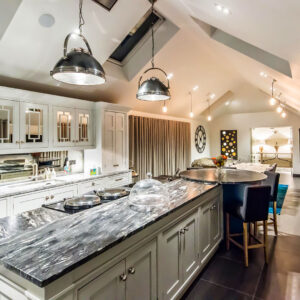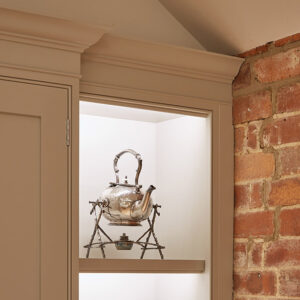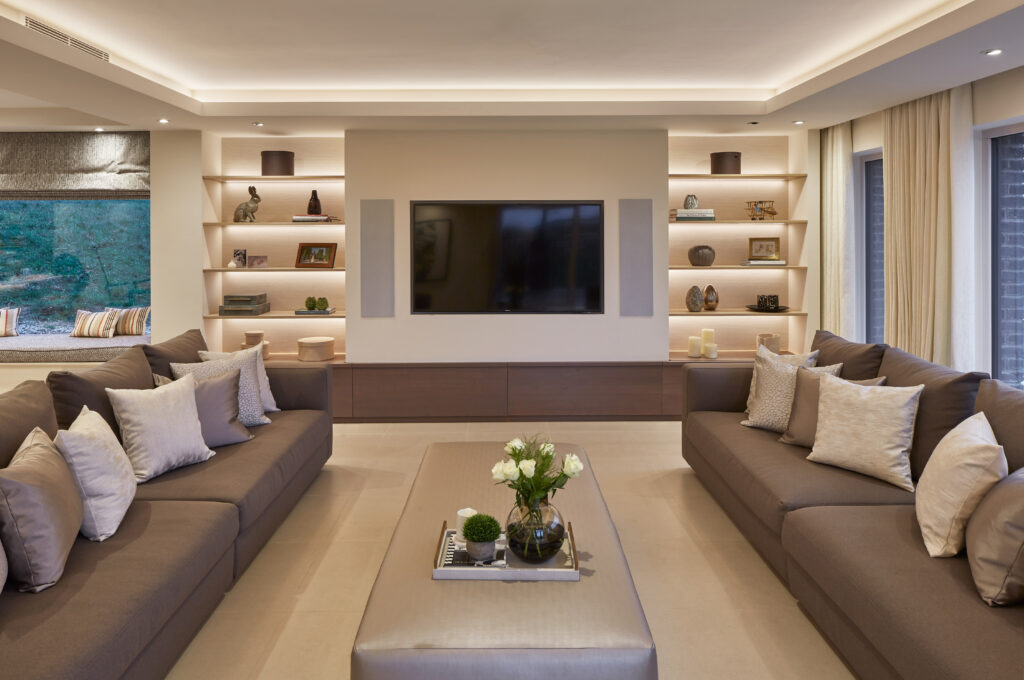Set the tone from everyday dining to entertaining
Dining rooms are classified as the heart of a family home. They are used for various situations, such as dinner, homework and family time. This means that you need to have the right balance between functionality and setting the mood or tone. In addition, when lighting a kitchen, you need to have a controlled atmosphere. It is the most important thing to focus on when lighting a dining room as the mood and purpose of the room will change throughout the day.

Main feature
The main focus of the room would be the dining table. There are many products that would be able to provide effective lighting for this area. One would be a pendant; this would provide a creative visual centrepiece for general lighting, but it might not be able to provide effective lighting on the table. You would be able to create some focus lighting by using two recessed spot lights on either side of the pendant. On the other hand, if you didn’t want a pendant, you could use a single spotlight to focus on the centre or light a centrepiece such as flowers or vases. If you are unable to do recessed lighting, then you can use a surface spotlight instead and it will give the same effect as a recessed light. Another option is to integrate a secondary source of light, such as a miniature spotlight, into a pendant; this method also works well when you can’t install a recessed spotlight.
Dimensions and general features
Once you have chosen a fitting to light the table, you should then consider the perimeter of the room. If you have shelves, you might consider adding some soft ambient lighting into the cabinet. This can be done with an LED strip such as LSC02 or small 1 watt downlights. Pictures are harder to light as you need to make sure you are choosing the right light colour for the frame and type of art. The reason you need to consider the type of art is because if you had a piece that was yellow, you might want to use a NW light. This is so the colours can be amplified, as with a WW light the colour might become a bit washed out by the orange coming from the fitting.

General lighting
When creating general lighting in a dining room, you would commonly use wall lights, lamps, and pendants. This is so you are able to get an even spread of light as well as highlight areas of the room where painting or items may be. LED lights are normally concealed in the ceiling coffer or in recesses around the room. The colour of the walls may influence your lighting selection. For example, if you have a white wall, you may not want to use a 2700K light because it may cause the walls to appear orange or yellow, so when doing a lighting design you need to make sure you consider all aspects of the room. Lastly, you would need to consider dimmable lights this is so that at night time you can create a softer tone in the room for any occlusions.
Task lighting
As a dining rooms is multi-functional, you would need the room to be able to cater to all the tasks at hand. If the dining room is being used as a home office or a work area or for the kids to do homework, then you will need task lighting as well as general lighting. This is so there is a more focused and concentrated light on the table, so it can be lit effectively. You would be able to create this task lighting by using overhead lights that have two different beam angles, this is so the light would give a more general light on the table.
In addition, when using task, general or ambient lighting, you might need to use separate channels for the lights. This is because the room’s mood will vary throughout the day, from breakfast to dinner, so you will always need different effects and tones. Having a separate channel ensures that each effect can be balanced when changing the mood in the room. Some effects might not have an impact during the day, but in the evening they become more effective.
Overall, there are many features to consider when lighting a dining room effectively. The dimensions of the space, the function of the space and the artwork. The furniture, wall colour, and areas of interest will also need to be effectively managed in order to create a coherent environment and lighting design. Therefore, there are luminaires of all shapes and sizes to help achieve the desired effect. The main challenge comes from selecting the best fitting to highlight the room effectively for all functions.



